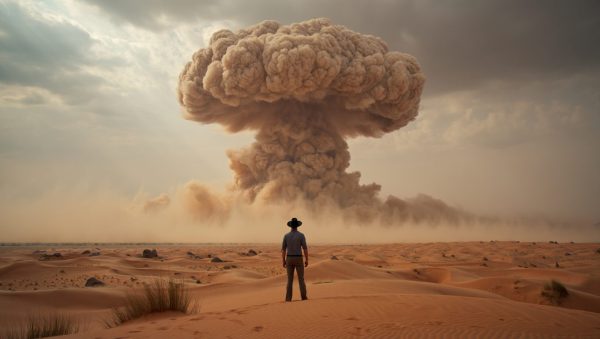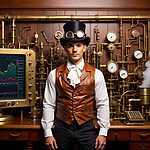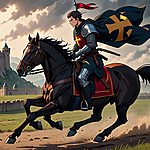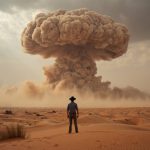The Anatomy of Collapse: From Euphoria to Ruin
May 6, 2025
The story of the biggest stock market crash in history is not a tale of mere numbers, but of fevered minds, tribal instincts, and the dangerous elegance of crowd delusion. Picture a marketplace not as a rational forum, but as a swirling, multidimensional vortex—where hope, greed, and terror collide in nonlinear spirals. The seeds of disaster are sown not in the balance sheets, but in the synapses of millions—each investor believing themselves immune to folly, yet all swept up in a tidal wave of collective blindness.
Mass behaviour, in these moments, transcends simple explanation. It is a living organism, pulsing with primal drives: the longing for profit, the fear of exclusion, the terror of loss. The biggest stock market crash emerges when these vectors align—each individual chasing safety, only to amplify risk; each seeking escape, only to deepen the trap. The paradox is relentless: the more people rush for the exits, the smaller the exits become.
Cognitive Biases: The Invisible Hand Behind Catastrophe
To grasp the biggest stock market crash, we must map the labyrinth of cognitive biases that warp perception and sabotage reason. Herd mentality, confirmation bias, and recency bias form a trinity of self-destruction. Investors chase what worked yesterday, dismiss warnings that threaten their worldview, and let the crowd’s voice drown out their own judgment. In the physics of fear, panic spreads faster than any contagion.
The crash is not just a market event, but a neurological one. Daniel Kahneman’s “System 1” thinking—fast, intuitive, and prone to error—takes command in crisis. Rumors become gospel, and myth replaces analysis. The technical signals—momentum shifts, liquidity vanishing, bid-ask spreads yawning open—are merely the visible surface of a deeper, psychological earthquake.
Contrarian Strategy: Dancing on the Edge of Chaos
Where most see disaster, the tactician perceives opportunity. The biggest stock market crash is both an end and a beginning—a clearing fire that strips away illusions and reveals the naked architecture of value. The contrarian does not flee the flames; she studies the pattern of destruction for hidden openings. In the ruins, she finds bargains, options, and leverage.
This approach demands a willingness to embrace paradox. The best trades are often the most uncomfortable, the buys that feel like leaps into the abyss. Legendary investors—John Templeton, Howard Marks, Michael Burry—have made fortunes by running counter to the stampede. Their edge? A refusal to let crowd delusion dictate their moves. They wield advanced technical tools—volatility analysis, sentiment indices, liquidity fractals—while tempering their models with the wisdom of myth and history.
Vector Thinking: Mapping the Nonlinear Terrain
Linear thinking fails in the crucible of the biggest stock market crash. Instead, we must navigate a multidimensional topology of shocks, feedback loops, and emergent behaviors. Think of the market as a vast neural network—one small spark, like a leveraged hedge fund blowing up, can ignite a chain reaction felt across continents.
Edge cases matter more than averages. Outlier events—Black Monday 1987, the 2008 financial crisis, the COVID-19 crash—reshape the entire landscape. “Six sigma” outcomes, once dismissed as statistical freaks, become the architects of new reality. The interplay between margin calls, algorithmic trading, and regulatory intervention produces strange attractors—zones where logic and chaos entwine.
Emergent Synthesis: From Mass Panic to Tactical Mastery
The consequences of the biggest stock market crash are not merely economic—they are psychological and strategic. Widespread panic empties portfolios and fills headlines, but it also forges the next generation of market masters. The crash is a crucible of innovation: risk controls are rebuilt, new instruments emerge, and survivors learn to spot the subtle signals of future upheavals.
True mastery lies in synthesising the lessons of mass psychology with advanced technical analysis. It is the art of standing outside the crowd, of seeing through the fog of panic to the shape of things to come. Tactical investors cultivate emotional discipline, scenario planning, and deep adaptability. They harness paradox—knowing that every collapse contains the seeds of a new ascent, and every ascent the whisper of future collapse.
Conclusion: The Relentless Logic of Human Folly
The biggest stock market crash in history is not a one-off calamity, but an ongoing cycle—a dance of hope and fear, stupidity and brilliance. It is a reminder that markets are not machines, but mirrors for our deepest flaws and greatest strengths. To understand the crash is to understand ourselves: forever vulnerable to illusion, yet always capable of contrarian insight and tactical reinvention.
Ultimately, the victors are not those who avoid chaos, but those who learn to navigate it—vector by vector, leap by leap, paradox by paradox. The future belongs to those who can think in dimensions, embrace uncertainty, and seize opportunity where others see only ruin.











